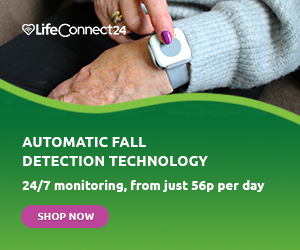This article was contributed by Shannon of rehack.com
There’s no denying that the world we live in has become increasingly digital. New technologies, such as 5G wireless tech and artificial intelligence (AI), are emerging annually. Therefore, all types of people must learn how to leverage them and reap all the benefits these technologies have to offer.
Below, we will discuss the concept of digital inclusion, the existing digital divide, and the importance of digital inclusion and literacy for older adults.
What is Digital Inclusion?
It’s important to note than the concept of digital inclusion arose due to the ongoing “digital divide” people are experiencing worldwide.
According to the National Digital Inclusion Alliance (NDIA) in the US, digital inclusion is necessary to ensure that individuals and communities, especially the disadvantaged, have access to the internet and Information and Communication Technologies (ICTs).
Five elements are included in digital inclusion:
- Affordable, robust internet service.
- Quality technical support.
- Internet-enabled devices to meet the user’s needs.
- Access to digital literacy training.
- Applications and online content that encourage self-sufficiency, collaboration and participation.
Digital inclusion requires constant development as technology advances. Thankfully, knowledge of digital inclusion is becoming more prevalent. As a result, there are now plenty of ways older people can build upon their digital literacy skills.
What is the Digital Divide and What Populations Suffer Most?
The use of digital tech is increasing across almost every sector in the economy. Many companies are now adopting a Bring Your Own Device (BYOD) policy. The BYOD market is expected to reach an estimated $300 billion by 2022, and many businesses are adapting to this growing trend.
While businesses are keen on making their digital transformation, not all populations can do the same. This is contributing to what has been named the “digital divide”. There’s a wide gap between people who have continuous access to the internet and those that do not. Older adults are considered a disadvantaged community regarding widespread tech adoption.
So why does it matter? The digital divide can have severe consequences for those who lack access to internet services, mobile phones, and other digital technologies. Being excluded from digital services such as online banking, paying utility bills, and even barriers in applying for jobs can negatively impact individuals and their quality of life.
For example, more than 8 in 10 middle-skill jobs require digital skills. This is a 4% increase from 2014. Additionally, as people adopt new technologies, others can feel excluded and isolated by not participating in increased adoption. Essentially, those who lack access to digital skills cannot fully participate in many aspects of society. This includes quality education, as well as economic opportunities and successes.
How Older Adults Can Become Digitally Literate
Overall, the ultimate goal of digital inclusion is to encourage older adults to overcome their initial embarrassment of not knowing how to use technology. It offers workshops, training programs, and classes specifically designed to help them improve their digital skills.
For example, the non-profit AARP recently joined forces with a New York-based organisation called the Older Adults Technology Services (OATS). Their goal is to help older adults thrive in a digital world.
AARP also launched the “AARP Virtual Community Center“, which is an online destination for older adults. There, they can find online classes and events designed to support their digital self-improvement. Older adults who want to become tech-savvy should consider visiting this online community centre.
Below are some specific steps older adults can take to improve their digital literacy skills:
- Learn the core technologies used in society, including desktop computers, laptops, tablets, and iPads and smartphones. Start with the basics and practice as often as possible.
- Understand what can be done with technology, whether it’s refilling prescriptions, managing finances, connecting with family and friends using video conferencing, using email, playing games, listening to music, shopping, and downloading or watching videos, movies, or TV shows.
- Visit Generations On Line, a website that helps older adult beginners learn to use devices such as iPhones, iPads, and Android and Amazon products.
- When searching for broadband internet, visit uSave to compare deals for the elderly.
- Visit the local library to pick up how-to books, which provide instructions on how to get started using various pieces of technology.
- Consider visiting TechBoomers or GCF LearnFree to receive assistance with new technology.
Learning how to use new technology offers plenty of benefits. Moreover, there are many online and offline resources available for older adults looking to improve their digital literacy. For those interested in receiving support for devices they already have, consider visiting HelloTech.
While using new technologies may seem daunting at first, relying on younger family members or friends can also be useful. Don’t be afraid to ask questions and take notes to refer to later.
Providing Access to Digital Technology for the Elderly
How can caregivers, family members, and friends of older adults support digital inclusion?
Be Patient and Understand the Digital Learning Curve
Anyone working with older adults needs to be patient. Learning how to use digital tech and the internet cannot happen overnight. There’s a learning curve older adults are contending with as they improve their digital literacy. When working with older adults, try to be patient and take time to answer their questions about technology. Furthermore, make sure they understand the basics first.
Be a Digital Inclusion Advocate or Volunteer
Some organisations are working tirelessly to close the digital divide amongst older populations. Consider making monetary donations or choose to volunteer. This may help some older adults improve their digital skills and literacy. Many areas likely have classes to assist adults with digital learning, so do some research to find them and discover how to get involved.
Digital Inclusion is Necessary in a Digital World
Ensuring that everyone has access to broadband internet and can adapt to new technologies is critical. Surprisingly, many people worldwide still lack basic access to new technologies. This is despite the fact that new technologies are becoming increasingly ubiquitous. Older adults, caregivers, and family members should prioritise digital inclusion, as it’s becoming increasingly necessary in a tech-savvy society.
Peace of Mind from LifeConnect24
Even the most technophobic older people can benefit from a Lifeline alarm. These simple devices are activated at the press of a button, putting you in touch with our trained Response Team. They offer additional peace of mind to those who are elderly, disabled, or frail. To set it up, all you need is a power socket and a phone line.
To find out more about our service, get in touch with our friendly team on 0800 999 0400. Alternatively, you can fill in our simple form, and one of our team will get back to you.



Leave A Comment